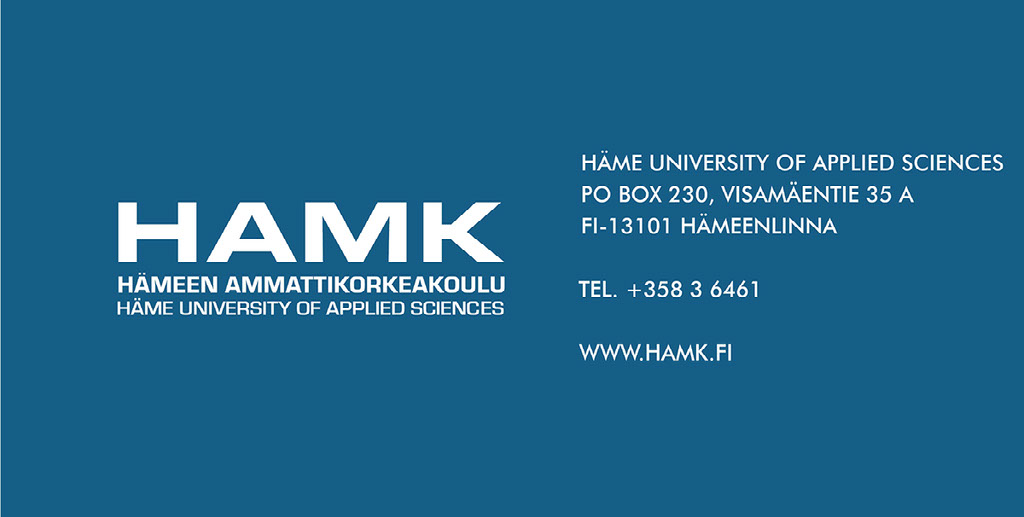HÄME UNIVERSITY OF APPLIED SCIENCES ANNUAL REPORT 2015 Higher education institution with a professional profile

First year as a limited company
Tarja Filatov, member of Parliament and Board Chairperson of Häme University of Applied Sciences Ltd
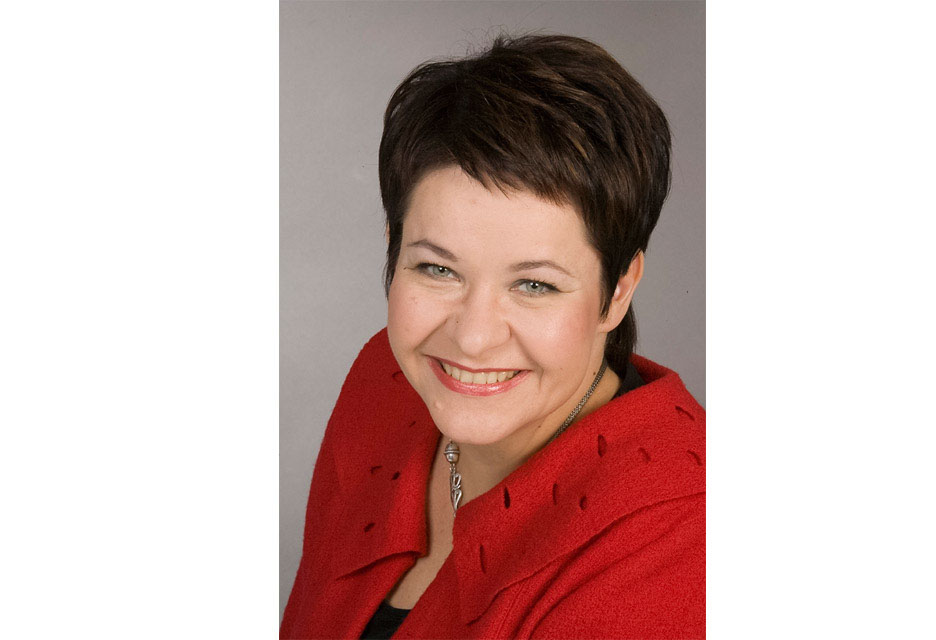
Häme University of Applied Sciences has completed its first year as a limited company. The transformation from a municipal federation into a company was technically challenging. While the legal format changed, the core content did not.
The impacts of savings in education also hit HAMK. Efforts to improve the efficiency of operations have continued for some time, and any superfluous activities have been axed. The most recent savings unfortunately also affected the badly needed human resources. However, we have striven to find solutions that minimise disruptions and avoid compromising on education quality.
The Minister of Education has challenged higher education institutions to identify the areas in which they wish to be the best. HAMK’s strategy focuses on inspiring education and research that caters for workplace needs.
The students are not all the same, and education must thus also serve different needs. The foundation of inspiring education is laid by the students’ personal career paths where they can either follow a working week model based on continuous guidance, or an accelerated model where the student works more independently. The third model makes it possible to utilise learning at the workplace.
HAMK has strategic international partners in Brazil (Feevale University) and Denmark (VIA University College). Cooperation with these partners has been developed and intensified.
As from 2016, higher education institutions will have the possibility of imposing tuition fees on non-EU/EEA students. The Government’s aim is to promote higher education institutions’ potential for export of education and to broaden their funding basis. Tuition fees highlight the quality of education as a competitive factor. It is worth remembering that quality is not only for the purpose of internationalisation; primarily, it is for the Finnish students.
The legislation sets the minimum limit of the tuition fee at EUR 1,500. Depending on the field, the costs of organising education are likely to exceed this amount. Selling our education for a cut-rate price for the sheer pleasure of making a deal would be pointless.
In public debate, it has been asked if tuition fees for foreign students bring more internationality or funding for higher education institutions, or if they possibly are a Trojan horse that will result in fee-paying education also for Finnish students. Time will tell which course the development will take. Based on what we know today, I do not expect any major changes at HAMK.
HAMK has been active in the sphere of export of education while also keeping an eye on the risks. The same policy should be applied to tuition fees. They are unlikely to become a major earner, even if this is what the Ministry of Education might wish.
While Finnish education has become famous thanks to the Pisa studies, this does not mean that our higher education institutions would be well known and sought after abroad. If we wish to attract fee-paying international students to Finland, we must build strong brands and consider what we can do better than others. In these efforts, we must be able to combine the strengths of the sub-regions and the university of applied sciences. The fee policy should be linked to the joint internationalisation strategies of HAMK and the regions.
In order for the Kanta-Häme region to do well in the future, the level of education must be improved in the entire region, progress must be made with internationalisation, companies must be persuaded to grow, and inputs in research and product development must increase.
Internationalisation and regional development may go hand in hand, and in this context, HAMK’s cooperation with businesses and municipalities plays an important part. This is not only about Kanta-Häme and Valkeakoski as a whole but also about cooperation at the subregional level. Cooperation may even support regional exports. These benefits will not be obtained automatically, and goal-oriented work is required to achieve them. HAMK is the only higher education institution in the region. It additionally has campuses in the areas of several municipalities, which emphasises the importance of well-functioning partnerships in the region of Häme.
“Austerity creates gloom, not innovations. The country may only be propelled out of the recession by people who have equitable possibilities for doing so and who are supported by an inspiring education system of a high quality.” These words were written to me by a student.
HAMK is the sum total of its people: students, teachers and other staff, companies and other partners - and good cooperation between them all.
Rector’s review of 2015
Pertti Puusaari, Rector
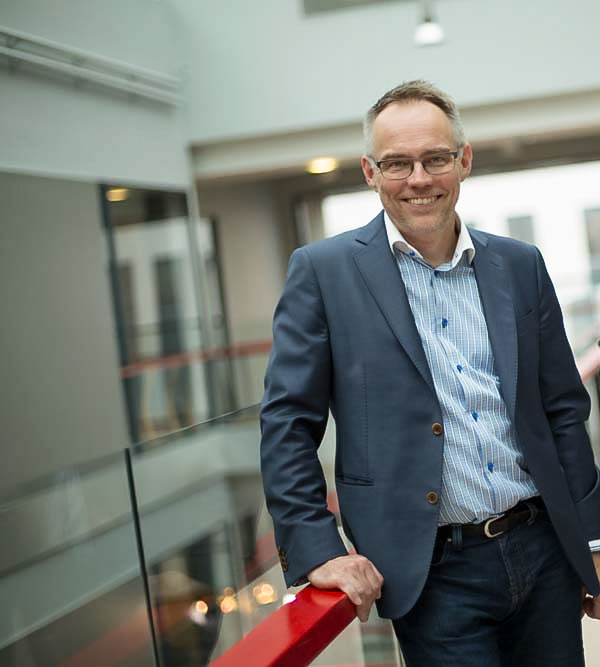
The distinctive feature of year 2015 was fierce debate on the higher education policy as part of broader societal discussion on change. Funding cuts continued as expected, and no change for the better is on the horizon. Despite of all this, HAMK has made systematic progress in implementing its HAMK 2020 strategy. Changing our practices, for example making use of digitalisation, as well as stressing a goal-oriented mindset in management have created good prerequisites for responding to a demanding situation of major changes.
The 175th anniversary of the Mustiala Campus and the 130th anniversary of Wetterhoff Institute were reminders of HAMK’s strong roots and meritorious history. The completion of the teaching barn in Mustiala and the Sheet Metal Centre in the University Centre, on the other hand, looked to the future. Both buildings boast cutting edge technologies in their fields and have attracted national attention.
The strategy highlights the student's role at the centre of all activities and better services for business, industry and other organisations. The three different learning models stemming from the ‘student at the centre’ mentality are being tested and developed. Student feedback on 8–16 model implementations has been good, the 18–100 model is well on the way, and the 24/7 model is evolving in step with the increasing offer of virtual studies.
To mark the launch of their operation, the research units have formulated more specific research programmes and intensified their cooperation with international partner universities. Concrete steps have been taken in both the Sheet Metal Centre and the Smart Services Research Unit.
In keeping with the obligations associated with our operating license issued by the Ministry of Education and Culture, we continued to develop our campus structure. A campus agreement has now been concluded with key actors of the region in each urban location. This means increased cooperation with secondary education actors and strengthening of the research units’ activities on the campuses.
The global education business developed positively. Teacher education programmes realised in collaboration with national HEI partners in Brazil and Kazakhstan are not only important to HAMK but also have national significance.
The Finnish society received large numbers of immigrants in 2015. In HAMK, this challenge was taken up by the School of Professional Teacher Education and the School of Wellbeing.
HAMK is now bringing to a successful conclusion its first year as a limited company. New practices have been formulated, and they have started becoming established. The Advisory board will start operating in spring 2016. The balance of HAMK Ltd is healthy, its educational responsibilities suit the needs of the region, and its buildings are appropriate for the operations. The operational preconditions are thus good.
The first year of operation in line with the new strategy crystallised by FUAS has come to an end. HAMK is responsible for the organisation of Summer Studies and technology for the Virtual Campus. Work is progressing well in both areas.
We have reason to be quite satisfied with our results in 2015. Thanks to the timely adjustment measures, our books are in balance regardless of the funding cuts.
Year of education 2015
Pirjo Kuisma, Head of Education Development
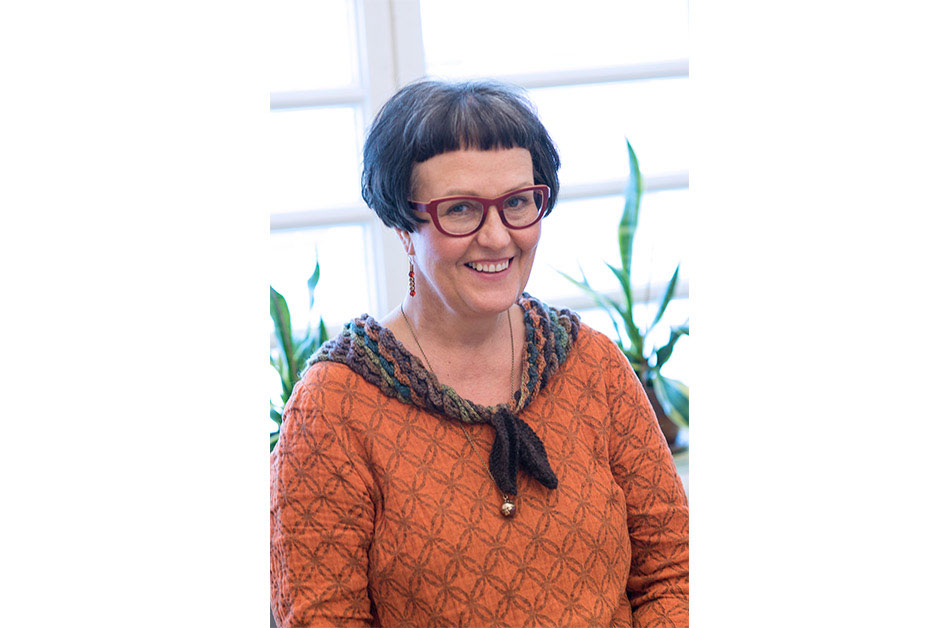
”From strategic choices to actions” is an apt description of the year of education in all of HAMK’s degree programmes in 2015. The second batch of students to follow the 8–16 and the 18–100 eduction models, or full-time and multiform study, started their studies in the autumn, and second-year students continued to follow the modular model. Module implementations now increasingly contain authentic workplace projects, entrepreneurial activities, and internationalisation with our strategic partner universities. Summer Studies offered by FUAS has expanded further, and students have a genuine interest in studying round the year.
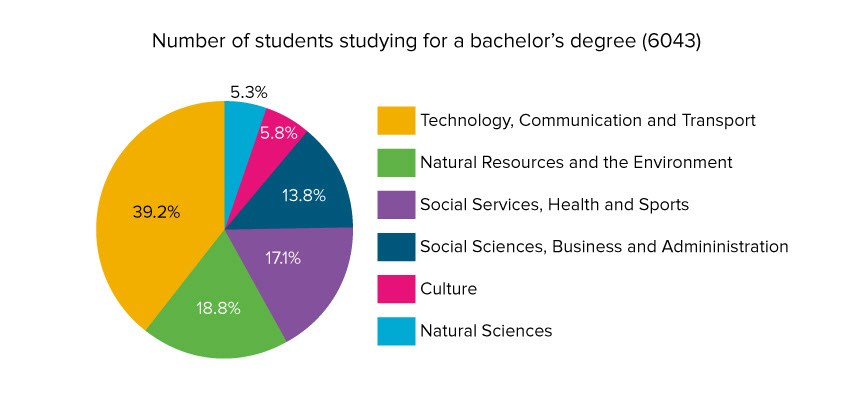
The heads of degree programmes carry the overall pedagogical and content-related responsibility for development efforts. The supervisory work and leadership for this group was developed through cooperation funded by the Ministry of Education and Culture and was implemented as projects. The heads of degree programmes have engaged in development work as teams that have promoted leadership in the renewal of teaching, work planning as well as the promotion of studies and guidance practices. These areas, which have been developed in cooperation, have been utilised by each head of degree programme in their degree programmes and with their staff.
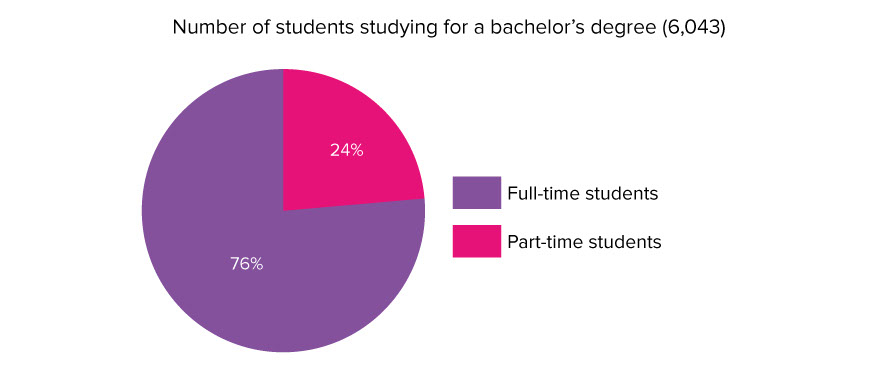
In the School of Bioeconomy, the education models have diversified and enriched the implementation methods of education. The students are offered a large range of profiling modules and the freedom to build different personal study paths. A compulsory module for the entire school taught in English, Sustainable Land-Use Management Systems and Bioeconomy, was implemented for the first time in autumn 2015. In this module, students in the programmes of forestry, horticulture, landscape design and construction, agricultural and rural industries, equine industries, biotechnology and food engineering, and sustainable development joined their forces to complete workplace-oriented projects. Guidance for this module was mainly provided online.
Cooperation with secondary education through the Open University of Applied Sciences has been successful in the School of Wellbeing. Good feedback has been received, and the cooperation is being developed further. These activities provide more flexible study paths from secondary to higher education studies. The School of Wellbeing also implemented an International Week, which attracted a high number of students and saw the active participation of key partners. In Social Services, the modular structure has been in use for a year longer than in other programmes, and it has accelerated the completion of degrees and supported the students’ independent progress.
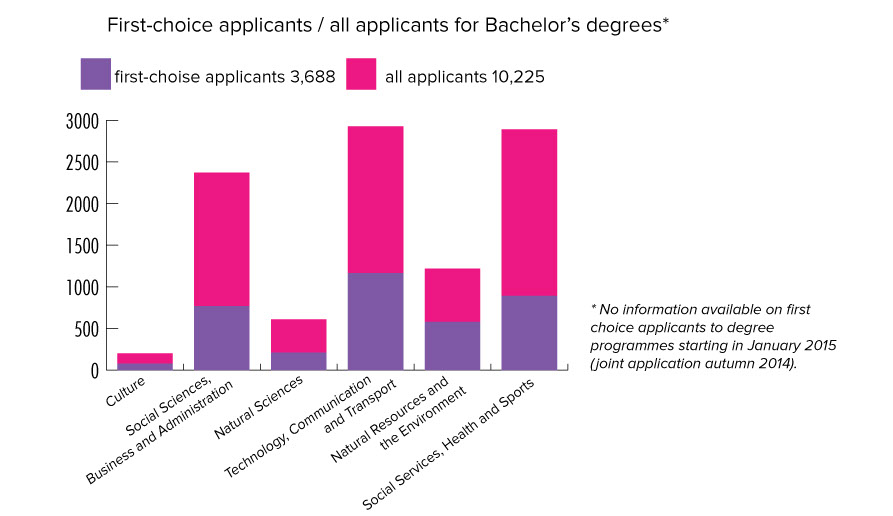
The School of Technology turned out a record number of graduates in 2015, despite the reduced number of students. The results of more efficient guidance and follow-up of progress made in studies are seen not only as a positive trend in credit accumulation but also as an increase in the number of graduates. The school has also focused on Summer Studies and offered the students the possibility of studying round the year. FUAS Innovation School (FIS) has already been organised several times as part of the FUAS Summer Studies. It is a conceptualised 15-credit module that contains both theoretical studies and practical project studies in authentic cooperation with employers. In summer 2015, a so-called basic implementation of FIS studies was offered to students who have studied for 1–2 years, with an advanced implementation for those who have studied for over 3 years and have project experience. FIS studies have also been used to make up for a work placement that is part of the studies for international students.
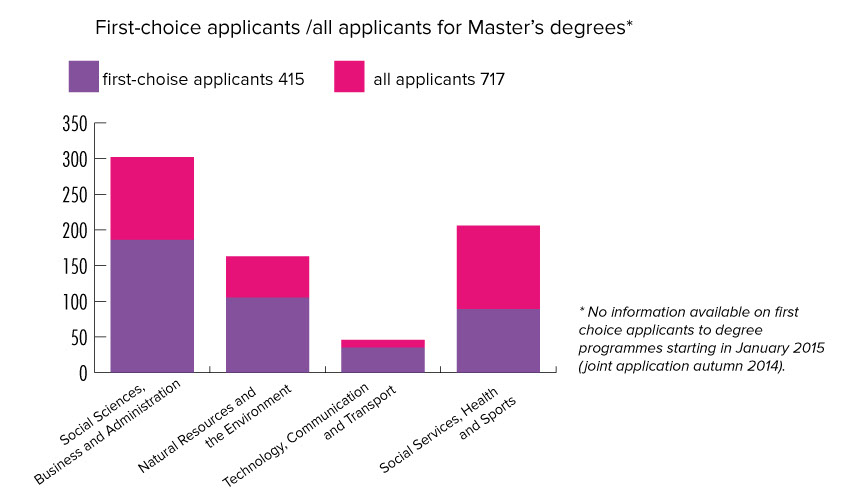
The achelor’s degree programmes of the School of Entrepreneurship and Business have successfully integrated workplace projects in the studies. Examples of successful multidisciplinary pedagogical experiments include Valkeakoski Christmas Fair 2015, Global Fashion Business modules, the Amazing Business Train concept in entrepreneurship education, and the piloting of the cSchool model in project learning.
In master's degrees in business administration, a model of agile higher education learning that is highly suitable for part-time education was developed in 2015. The pedagogical starting points of the model are communal team learning, learning at and from work, a dialogical approach and reflection as well as the students’ own work organisations as learning environments. Student teams assume responsibility for and take ownership of their own learning. The teachers guide team learning and encourage the students to share and create new knowledge. This model, which ensures student commitment, has been found efficient and motivating for part-time students, as solving authentic workplace problems makes studying meaningful. The model was developed as part of a project funded by the Ministry of Education and Culture aiming to enhance the RDI role of master’s degree education provided by universities of applied sciences. The model will also be spread to multiform education in bachelor's degrees.
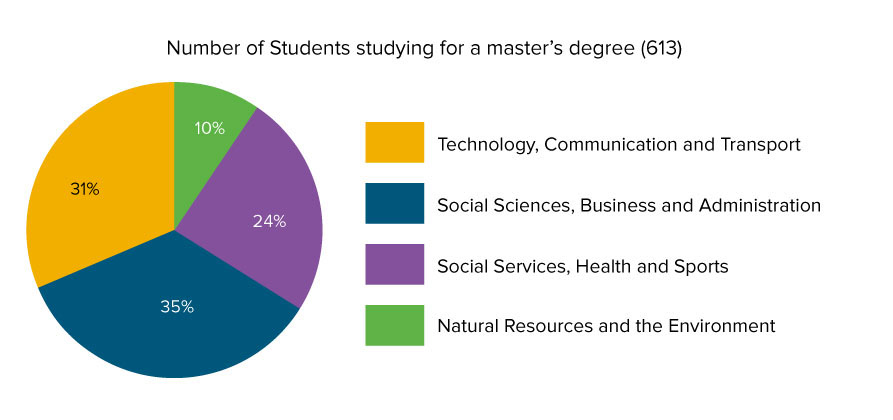
The School of Professional Teacher Education noted with delight during the year the great results produced from arranging the studies within a shorter time period and anchoring them more tightly to the teacher students’ work. The rate of graduation with qualifications awarded by the School of Professional Teacher Education (teacher, student counsellor, special needs teacher) improved further.
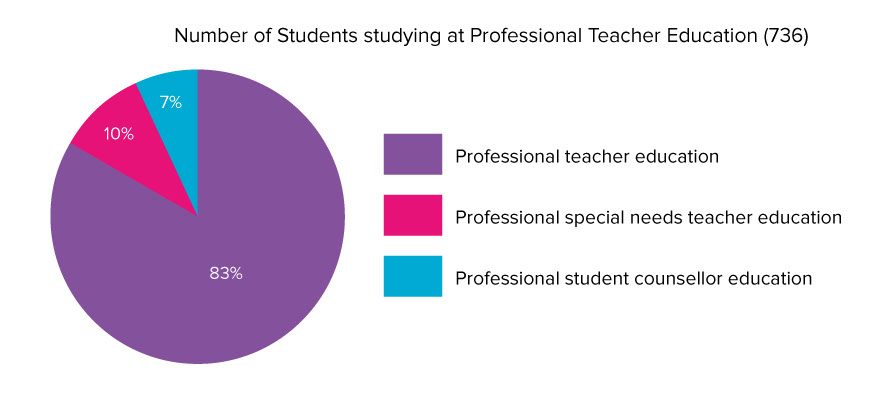
The modular model has proven efficient in renewing education. In team-based studies, student groups become more close-knit, the students obtain more credits, the teachers’ team-based guidance and teaching work develops, and better feedback on the studies is received from the students. In all degree programmes, modular implementations have improved, and more students obtain 55 credits a year in modular implementations, both in full-time and multiform groups. Sharing competence brings results.
Visibility and influence of students
Emma Heinänen, Chairman of the Häme University of Applied Sciences Student Union
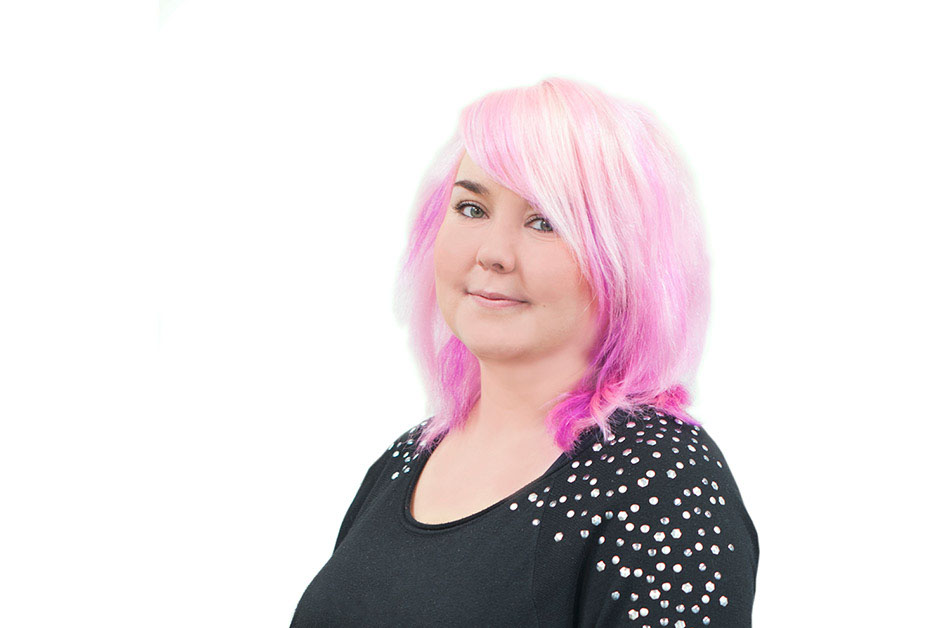
The student union worked in close cooperation with HAMK during the year 2015 and was enthusiastically involved in developing modules and the institution as a whole. The student union actively expressed its views on the on-going changes within the university of applied sciences, for example by taking part in HAMK’s internal working groups, and continued its regular meetings with the management. Issues relevant for the students were highlighted one by one, and many changes were accomplished.
One of the themes that the student union focused on in 2015 was internal feedback in HAMK. The student union organised several events where students were invited to provided feedback. This feedback was discussed with the management, and any problems were resolved.
The parliamentary election panels organised on four campuses represented efforts at regional influence. The student union has also striven for visibility in the local media. Several publications were noted in the local papers, and an interview on student health care was broadcast in the regional evening news.
Internationality was emphasised from the beginning of 2015, and the student union board welcomed the first international student as its member. The student union built up its activities targeted at international students and expressed its views on tuition fees for non EU/EAA students.
Steps forward in research, regional development and internationalisation in 2015
Janne Salminen, Vice Rector and Marja Räikkönen, Head of International Affairs
Efforts to develop international partnerships had a major role in our international activities in 2015. At a seminar organised in Hämeenlinna with HAMK’s strategic partners (Feevale University in Brazil and Via University College in Denmark) in May, future cooperation was outlined, and there were several plans made in the form of concrete joint projects to be carried out in forthcoming years. All the partners are committed to developing this cooperation further. In particular, more intensive cooperation will be seen in online teaching and research. Progress made in these two areas of cooperation in the latter part of the year also enabled the launching of multi-disciplinary projects. In the partner network, collaborative research has been carried out on the suitability of digital services and aids to help the elderly cope more easily. Participants in this project include health care experts in the region. Joint research is carried out on technologies that increase buildings' energy efficiency, and several joint projects are being planned. The parties are committed to long-term cooperation in the area of research.
HAMK’s new research units got well under way in launching their operations. Funding for research activities remained at a reasonably good level regardless of cuts in regional development funds during the current EU programming period. At the national level, HAMK was one of the most successful universities of applied sciences when it comes to raising external funding.
Proven forms of cooperation continued with other actors in the region, while new schemes were also developed. HAMK continues to work actively together with such stakeholders as Linnan Kehitys Oy, Häme Entrepreneurs’ Association and Häme Chamber of Commerce in Team Finland Häme cooperation, with the aim of supporting the internationalisation of companies. The "Grow and internationalise" event organised by this network again brought together companies in the region that are interested in internationalising their operations. Among other things, regional and national level internationalisation services for companies were presented at the event. In particular, HAMK students and teachers introduced participants to activities offered by higher education institutions that can support internationalisation in companies. Active efforts have also been made to find new methods for supporting the region’s internationalisation. One of the challenges lies in the sudden increase in the number of immigrants. New operating methods have been found for supporting the integration process, for example through the projects and work placements of Social Services students.
Towards communal working methods
Heidi Ahokallio-Leppälä, Director of Development and Human Resources
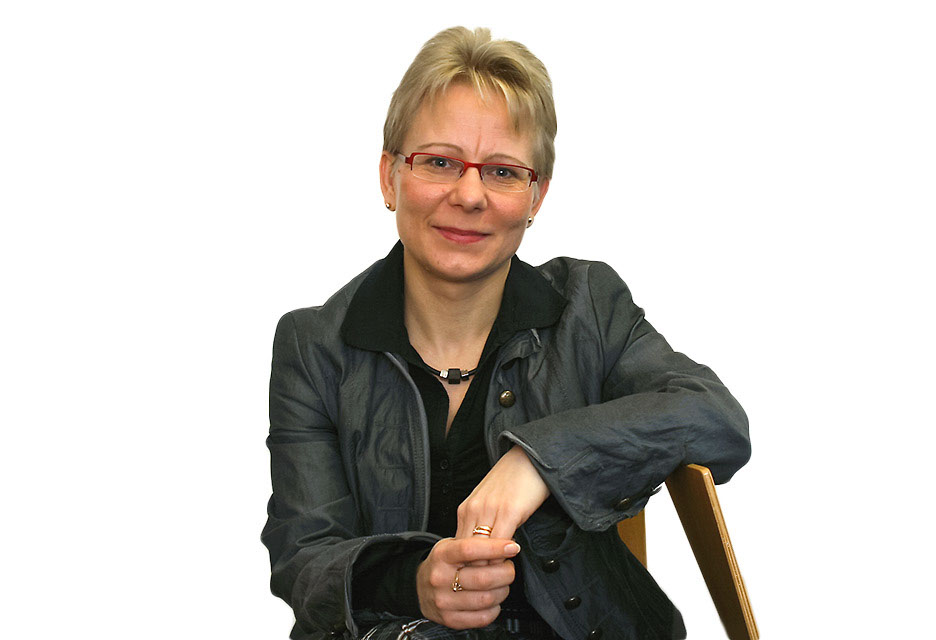
HAMK has completed its first year as a limited company. The transition to a limited company has meant lighter management structures and, on the other hand, moving increasingly towards a contractual system. Especially for the teaching staff, the replacement of employment relationships covered by the Act on Civil Servants in Local Government by contracts within the scope of the Employment Contracts Act was a significant operational change. The next important change can be expected from the beginning of 2017 as the employment contracts of the entire staff with Avainta Employers’ Association enter into force.
In 2015 we focused on profiling the schools. To support management and development, we must have a more extensive vision of the organisation's future and the competence needs it will bring. In practice, this will require capabilities for increasingly interactive operation where decisions are made on the basis of knowledge built through joint discussions and development efforts. The task of the management and supervisors is to pay attention to building, maintaining and developing communal competence in keeping with both our strategies and our goals. Competence management, leadership and development also require interactive and collective management behaviour.
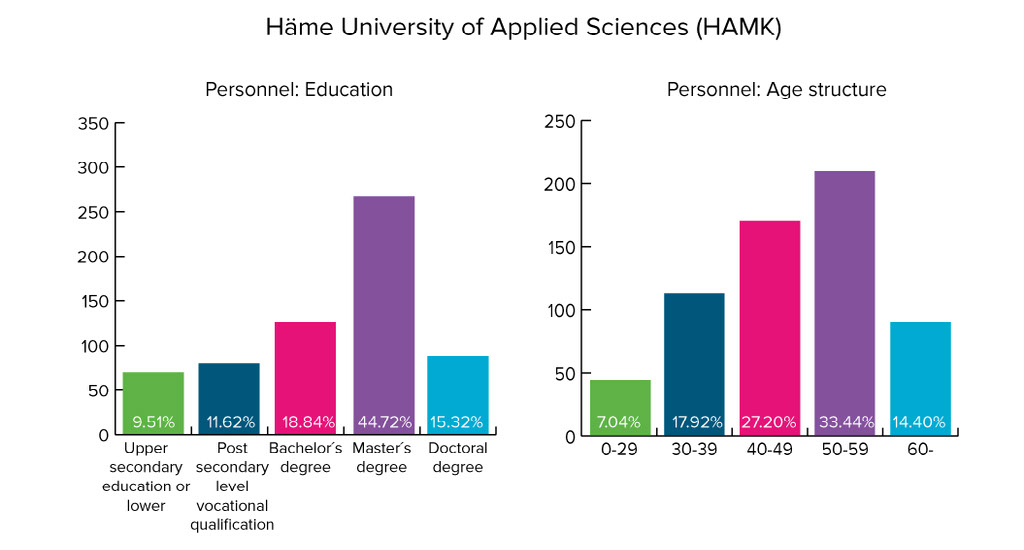
We have actively striven to change our practices in line with the strategy. The education models and their modularisation have taken huge steps forward during the year. This change will also gradually be seen as improved results. The goal of the reform is to improve the quality and workplace relevance of teaching and offer the students more genuine choice. From the employees’ perspective, the shift from working alone to working together was a major change that affected their professional identity. It has also resulted in individual peak workloads, which have their specific influence on both the quality of operations and goal achievement.
Recent years have seen significant cuts in the funding for universities of applied sciences. As a result of the reduced funding and cuts in intake that took place in 2011, HAMK had to let some of the staff go in 2015. Redundancies could not be avoided. Häme University of Applied Sciences was forced to dismiss 21 persons in 2012–2015, and the total reduction in staff numbers during that period was 140. The groups that were affected the most were the project and support services staff.
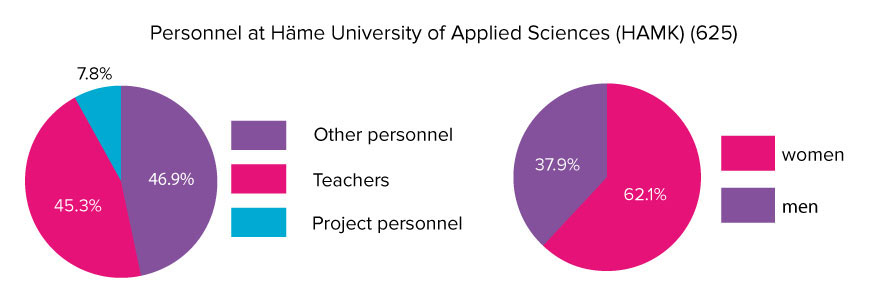
As a university of applied sciences, we are committed to higher education reform policies and also find them necessary. Universities of applied sciences play a key part in workplace renewal, and their role can be further emphasised. The roles of applied research and Master's degrees in performing this task should also be strengthened. Häme University of Applied Sciences will have a bright future outlook if we can express our goals in more concrete terms, go further together and leave enough space for expertise and its development. It is about will, competence and leadership.
Year 2015 – in a renewed organisation
Toni Laitinen, Senior Lecturer in Information and Communication Technology, Head Shop Steward (Trade Union of Education in Finland)
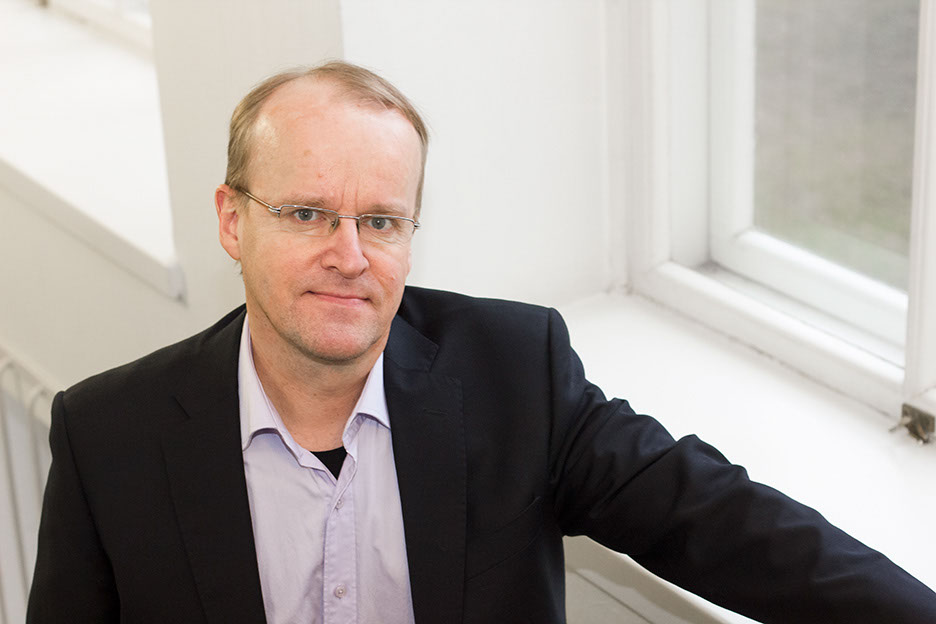
HAMK’s first year of operating as a limited company brought less changes for the staff than expected. While local government officials became employees with employment contracts, the impacts were minor as contracts with Avainta employers’ association will only become valid at the expiry of the previous contract period. The staff are becoming accustomed to the pedagogical reforms including the three-channel model, and they have been received as positive rather than negative changes by many. The impacts of central government funding cuts hit HAMK harder than expected, and the financial situation resulted in an atmosphere of uncertainty.
Major changes took place in the elected officials of the Trade Union of Education in Finland at the turn of the academic year: Toni Laitinen took on the role of Head Shop Steward after Sirpa Neuvonen’s retirement. The round of cooperation negotiations in the autumn was challenging for officials who took part in cooperation-related duties, as they were simultaneously still learning their new tasks. With the introduction of school-specific shop stewards, the stewards were assigned new tasks as the number of actors was reduced by one half.
The principle of representation, for example the participation of a staff representative in the work of the Board of Directors, maintains and improves an atmosphere of openness. This practice was started in earlier years and recently expanded. Continuous contact between the actors in the form of negotiations reduces the impacts of misunderstandings that are due to lack of information, and continuing this policy is seen as a factor that will also maintain and develop a good atmosphere in the work community in the future.
The practice of working together on teaching modules is beginning to produce results that not only benefit the students but also give a boost to teachers who previously struggled alone. However, deploying the new operating methods has increased the staff workloads. We can only hope that establishing these practices as part of our daily working methods will finally pay itself back as benefits from increasingly versatile activities.
Good supervisory work encourages the community and points it in the right direction and, with due consideration given to coping at work, gives us space to steer HAMK together towards the goals expressed in the strategy. This process is also maintained and promoted by well-functioning cooperation.
HAMK’s budget is in balance
Mirja Pöhö, Director of Finance and Administration
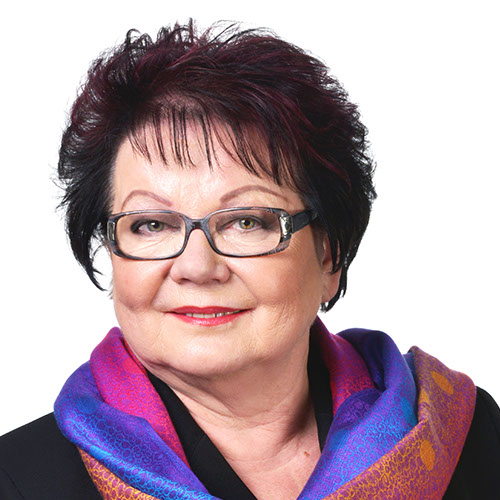
In the final analysis, financial management at Häme University of Applied Sciences was relatively successful, even if 2015 was the third successive year of funding cuts. Financial adjustment measures were initiated in HAMK as soon as we were informed of the forthcoming amendments in the Act on Universities of Applied Sciences and funding changes.
HAMK’s turnover was EUR 52 million, capitalised production EUR 0.2 million, and other operating profits EUR 2 million in 2015. The other operating profits mainly consisted of rental of facilities.
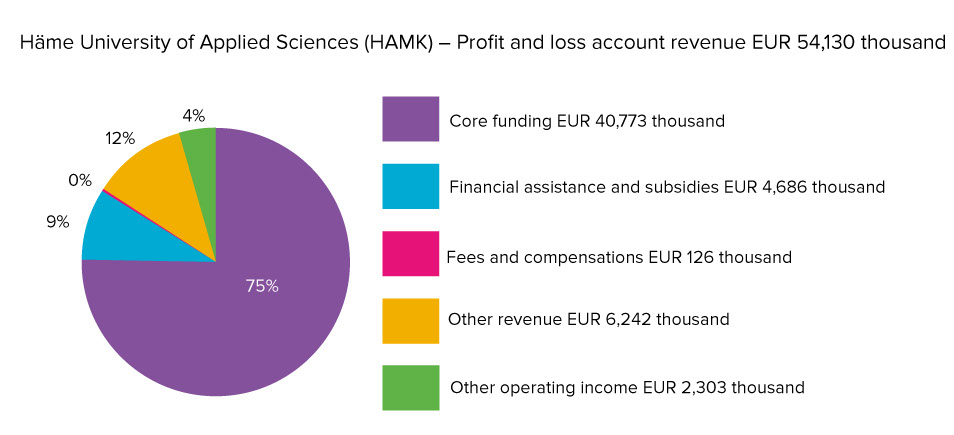
The operating expenditure of EUR 54 million in 2015 consisted of the following items: materials and services EUR 3.4 million, personnel costs EUR 35 million, other operating costs EUR 12.2 million, and depreciations EUR 3.6 million. The final figure of the accounting year showed a deficit of EUR 254,095.87.
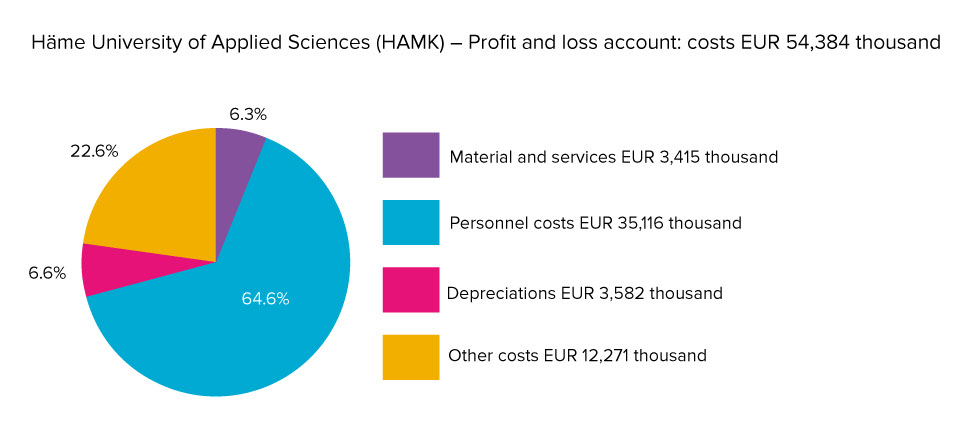
HAMK’s investments amounted to EUR 3.9 million. The most significant investments completed during the accounting period were the teaching and research barn in Mustiala and the new facility of the Sheet Metal Centre.
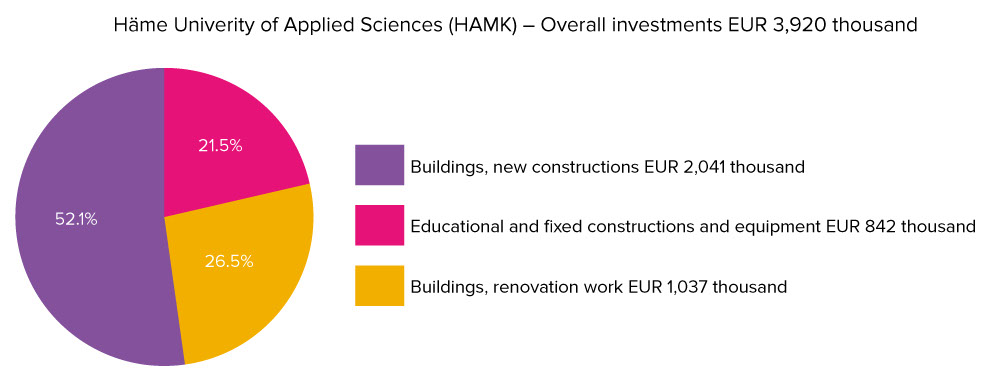
The limited company had a strong balance sheet, and its liquidity remained at a healthy level.
Häme Vocational Institute Ltd is owned by Häme University of Applied Sciences Ltd. Jointly, these two institutions form a group with a turnover of EUR 57.7 million and accounting year profits of EUR 50,859.99.
Both companies began operating on 1 January 2015, and reference data from the year before is thus not available.
Plans for facilities making progress
The building of the University Centre campus in Visamäki will be Häme University of Applied Sciences’ key investment in 2015 – 2017. All activities in Hämeenlinna town centre will be centralised to Visamäki by autumn 2017.
Campus planning, which has been a long-term communal effort, continued in 2015. This work was based on a previously formulated project plan that contains a theoretical facilities plan and a draft plan for construction work and alterations. On this basis, a decision was made to construct two additional buildings, with construction work to begin as soon as May 2016.
The heart of the campus will be a unit linking the existing buildings that will house the library and the joint services of the campus. In addition, a new building will be constructed in conjunction with the existing one for the special needs of social and health care education that will relocate here from Lahdensivu Campus. As a result of this plan, four buildings can be united under a single roof.
The whole personnel has participated in the planning of Visamäki Campus. To support the planning of the alterations to existing buildings and the construction of new ones, several workshops were organised for the personnel in spring 2015, in which ideas for the facilities were collected from the personnel and the students alike.
A shared vision is that facilities that can be adapted flexibly to various uses, and their zoning for different types of activities to support a new learning culture. Workshop participants also hoped that the new learning environments would have closer links with enterprises in the region.
‘Student at the centre’ was the underpinning principle of the renovation work. For students, a more uniform campus will signify better services, more diverse opportunities for study and an active campus life. Visamäki Campus will offer something new and something old, combining traditions with looking ahead.
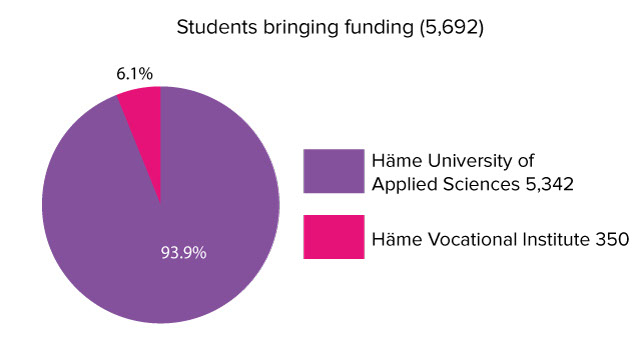
The campus will feature a shop, a service station and student housing. The building of these components by various actors will also start in summer 2016.
Year 2015 at Häme Vocational Institute
Ari Mikkola
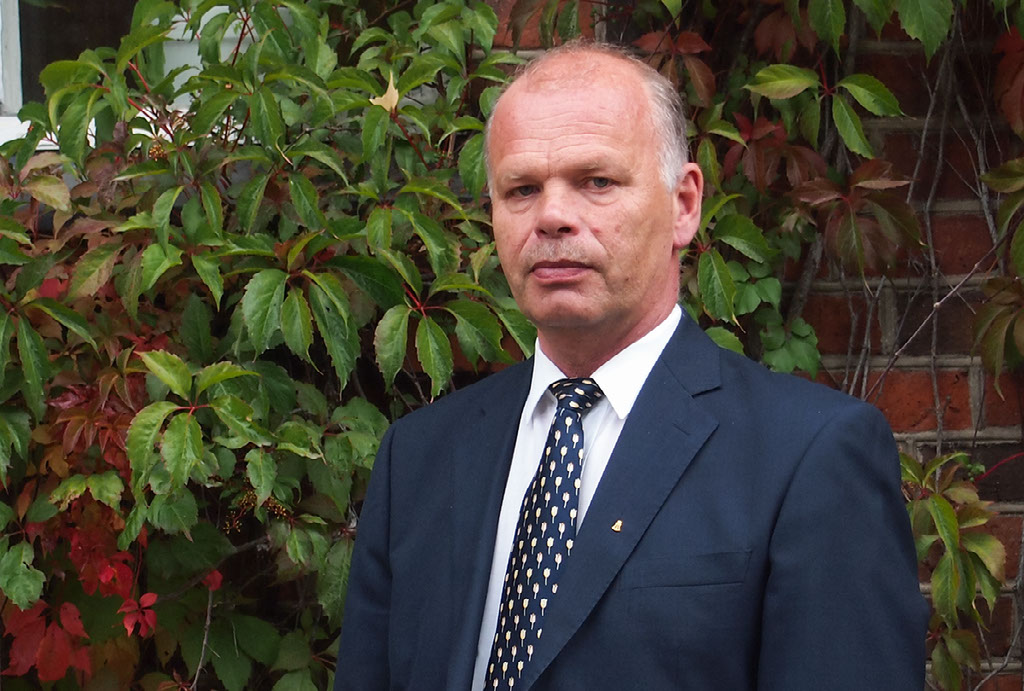
Häme Vocational Institute is an educational institution that provides education in the field of natural resources and the environment and the related fields of food production and tourism. It also offers driving instructor training. The central methods of operation of the institute are vocational education and training leading to vocational qualifications aimed at young people and adults and vocational further and continuing education. The vocational further and continuing education expanded further as Specialist Qualifications in Management were transferred from the university of applied sciences to the vocational institute in the autumn.

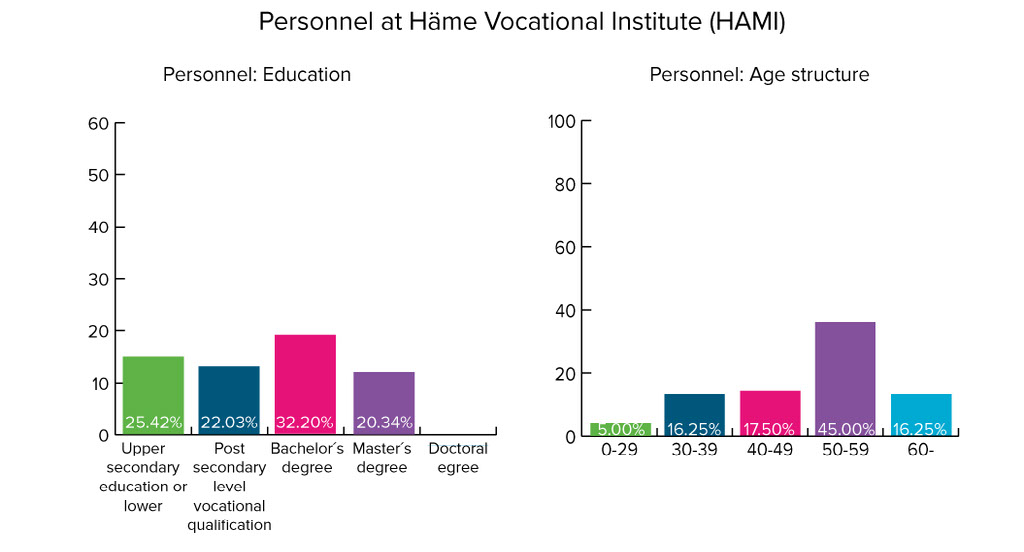
The institute’s maintenance system was renewed at the beginning of 2015. After the municipal federation was disassembled, Häme Vocational Institute became an educational institution fully owned by Häme University of Applied Sciences Ltd. The institute engages in close cooperation with Häme University of Applied Sciences as the two institutions operate on the same premises and use shared resources.
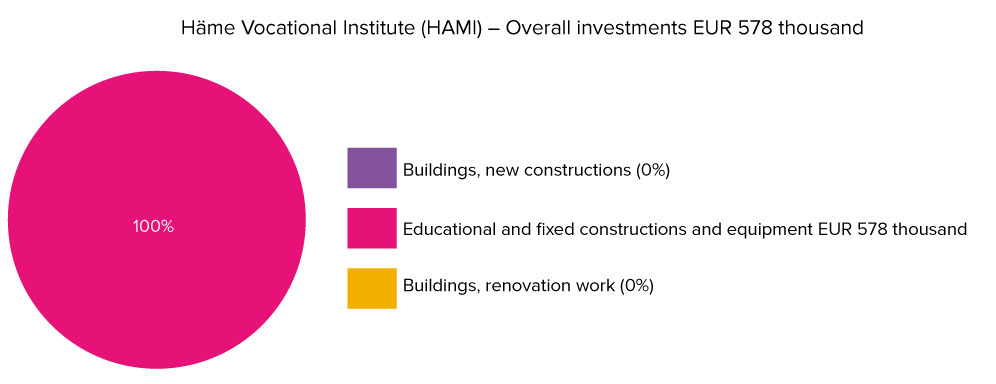
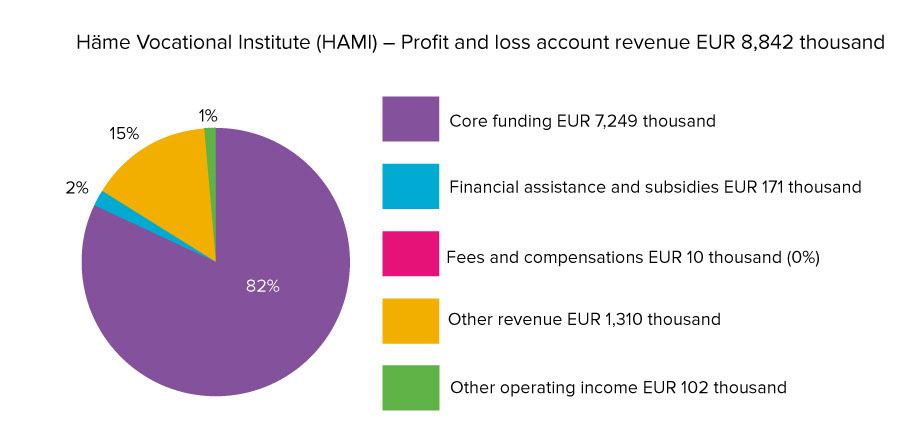
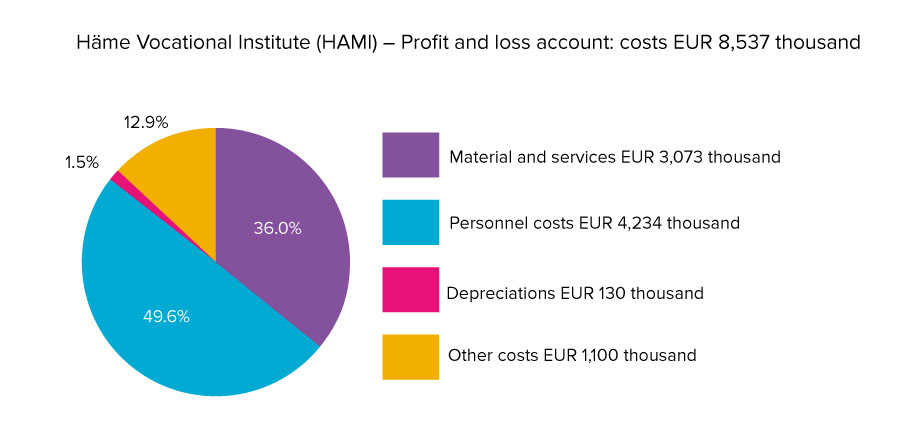
The admissions process at the institute was highly successful. The number of first choice applicants to education leading to a vocational upper secondary qualification was similar to previous years, even though smaller age groups have resulted in increased competition for new students. In programmes for young students leading to a vocational qualification, the number of primary applicants was 1.5 per each available study position. The total number of students of Häme Vocational Institute fell slightly short of the maximum of 355 students stated in the operating license. During the year, a record-breaking number of 140 students received their qualifications. The number of those who dropped out (33 students) was also smaller than before.
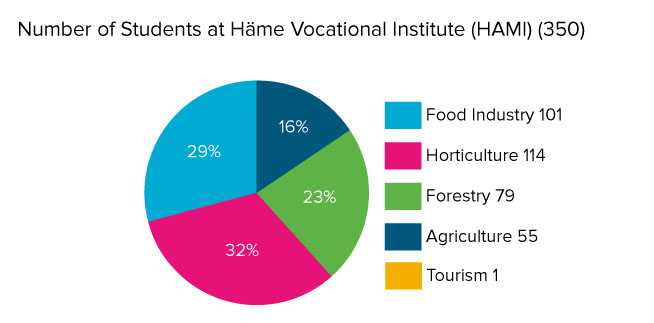
The operating licenses of vocational institutions were renewed in 2013. Häme Vocational Institute's operating licence will gradually reduce the maximum number of students on which the institute’s funding is based from 375 to 340 students by 2016. In 2015, the maximum number of students was 355.
The values of the indicators that affect the performance-based funding of vocational education and training declined slightly from the year before. Measured by the results index, Häme Vocational Institute Ltd was the 57th among 115 education providers and narrowly ranked number one in the Kanta-Häme region. Its position in the ranking was 25th in 2014 and 53rd in 2013. Regardless of slipping back slightly, the Institute will continue its long-term efforts to improve the completion rate and to reduce the number of students dropping out. The employment rates of graduates are reasonably good, even if the downturn of the Finnish economy has had a negative effect on the employment rates of new graduates everywhere. Graduating in time and a good employment rate are central criteria for performance-based funding.
On 1 August 2015, new qualification requirements were introduced both in education leading to a vocational qualification and in training preparing the students for vocational qualifications. The introduction of the new qualification requirements created major workloads as competence is now the basis of curricula, personal study plans, assessment, and demonstration implementation plans as well as the implementation and evaluation of teaching and recognition and accreditation of prior learning at the education provider level.
Häme Vocational Institute continued its activities in various forms in the Välkky network based on a partnership agreement between institutes providing upper secondary vocational education and training. Several projects were ongoing within the Välkky network and in cooperation with other partners with aims such as developing the professional skills and on-the-job learning of teachers and promoting entrepreneurship.
